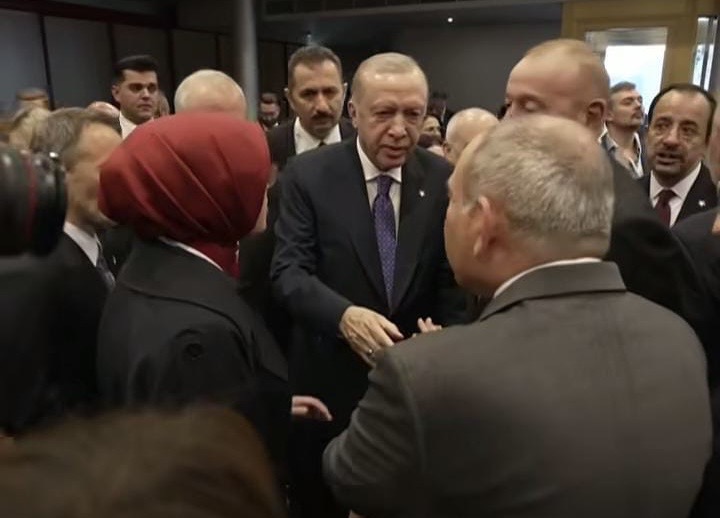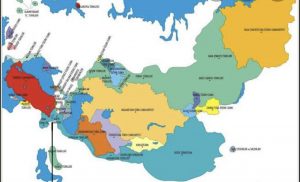Alihuseyn Gulu-Zada: Advancing the Institutionalization of the Armenian-Azerbaijani Peace Process – October 2025
October 2025 was marked by significant events in the context of the Armenian-Azerbaijani peace settlement. And although progress between the two countries is evident, some political disagreements still remain to achieve a Comprehensive Peace, including, for example, Iravan’s refusal to change the country’s Constitution, which contains direct territorial claims to the internationally recognized territories of Azerbaijan.
The Current Peace Agenda
Progress in the Armenian-Azerbaijani peace settlement was once again highlighted at the “peace summit” on the Middle East settlement in Sharm el-Sheikh (Egypt). On October 13, 2025, the leaders of the two Caucasian countries – President of Azerbaijan Ilham Aliyev and Prime Minister of Armenia Nikol Pashinyan – spoke on the sidelines of the summit, which was co-chaired by the presidents of Egypt and the USA – Abdel Fattah el-Sisi and Donald Trump. Later, the US President stated during the event that the settlement of the 32-year conflict between Armenia and Azerbaijan was achieved by him “in just one hour.”
On October 14, 2025, the OSCE Chairperson-in-Office, Finnish Foreign Minister Elina Valtonen, while in Iravan (Armenia), also welcomed the joint appeal of Armenia and Azerbaijan for the dissolution of the OSCE Minsk Group. She expressed hope that the dissolution process would be completed by the end of December.
As for humanitarian issues, Valtonen ignored questions from Armenian journalists “about the right of Armenians to return” (to Azerbaijan), while Armenian Foreign Minister Ararat Mirzoyan stated that the Armenian authorities are working on the integration of Armenian displaced persons in the country.
It should be noted that Prime Minister Pashinyan has previously repeatedly stated that the return of Armenians to Azerbaijan (Karabakh) is unrealistic.
Iravan’s Position on Amending the Constitution
The head of the Armenian foreign ministry also touched upon the topic of the former leaders of Armenian separatists, who are on trial in Baku, and noted that this topic was discussed with Azerbaijani partners “just yesterday” (i.e., October 13, 2025) in Sharm el-Sheikh. The head of the Armenian Foreign Ministry expressed hope “for positive news in the near future” and noted that Iravan is working daily for their release.
In Mirzoyan’s case, it is also important to note his statements in an interview with Deutsche Welle (DW), where, in addition to comments on the current agenda of the Armenian-Azerbaijani peace settlement, he also touched upon the topic of amending Armenia’s Constitution (which contains territorial claims against Azerbaijan). According to the Armenian diplomat, Yerevan does not accept Baku’s demand to amend the Constitution of Armenia to sign a peace treaty and that there is nothing in the Constitution of Armenia that would indicate territorial claims against Azerbaijan.
Parallel to these events, on October 21-22, 2025, a round table was held in Iravan with the participation of civil society representatives from Armenia and Azerbaijan, which marked an important development for strengthening mutual trust. Secretary of the Security Council of Armenia, Armen Grigoryan, met on October 22, 2025, with Azerbaijani experts who arrived on a charter flight from Baku to Iravan, which is a historic event.
Aliyev’s Visit to Kazakhstan and the Reaction of Armenian Authorities
One of the key events of October 2025 was the visit of Azerbaijani President Ilham Aliyev to Kazakhstan on October 21, 2025, and his statements about lifting all restrictions on cargo transit to Armenia through Azerbaijani territory. According to him, the first transit cargo was Kazakh grain heading to Armenia. The Azerbaijani leader also noted that “a stage of peace has begun” between Baku and Iravan.
On October 22, 2025, Prime Minister Nikol Pashinyan, speaking at the “Silk Road” forum in Tbilisi, welcomed Aliyev’s statement, calling it extremely important in the context of implementing the Washington agreements. The Armenian Prime Minister emphasized that Iravan is politically and technically ready “from today” to ensure the transit of trucks from Turkey to Azerbaijan and back along the Margara-Yeghegnadzor-Sisian-Goris route.
Press Secretary Nazeli Baghdasaryan, in turn, noted that this step is important for opening regional communications, building trust, and institutionalizing peace, which in turn, corresponds to the Washington agreements; and the Minister of Economy of Armenia, Gevorg Papoyan, clarified the logistics of the Kazakh grain delivery route. According to him, it will be delivered across the Caspian Sea along the Aktau — Baku route, and then by rail through Azerbaijan — Georgia, and on to Armenia.
Theses:
- The main consequences of the October statements by Baku and Iravan suggest the actual beginning of the practical institutionalization of peace through the opening of communications, which is confirmed by the transit of Kazakh grain through the territory of Azerbaijan.
- Nevertheless, attempts by the Armenian side to actualize and keep on the agenda the unresolved humanitarian issues, such as the “release of Armenian prisoners held in Baku,” who are, in fact, documentarily proven war criminals, can be observed.
- Also noteworthy are the statements of Armenian Prime Minister Nikol Pashinyan, who seeks to include the issue of Armenian-Turkish normalization in the agenda of unblocking regional communications (the transit of Kazakh grain), the success of which promises to turn Armenia into a kind of logistics hub between the two Turkic countries. Nevertheless, the attempts of the Armenian leadership seem unlikely to be realized, given Ankara’s consideration of Baku’s interests.
- It is worth noting that in the event of Baku’s hypothetical agreement to release the former leaders of the Armenian separatists (an extremely unlikely scenario), who mostly hold pro-Russian and revanchist views, this could negatively affect both Pashinyan’s own power and the peace agenda between Azerbaijan and Armenia.
- Events indicate a high probability of continued steps to build trust and unblock regional communications in the medium term (as exemplified by the transit of Kazakh grain), but the long-term prospects for the development of transport routes like TRIPP, Armenia’s geopolitical vector (EU or EAEU), the topic of amending Armenia’s Constitution, and the topic of parliamentary elections remain subjects of likely complex discussions and uncertainties.
Alihuseyn Gulu-Zada
Share this content:








Yorum gönder